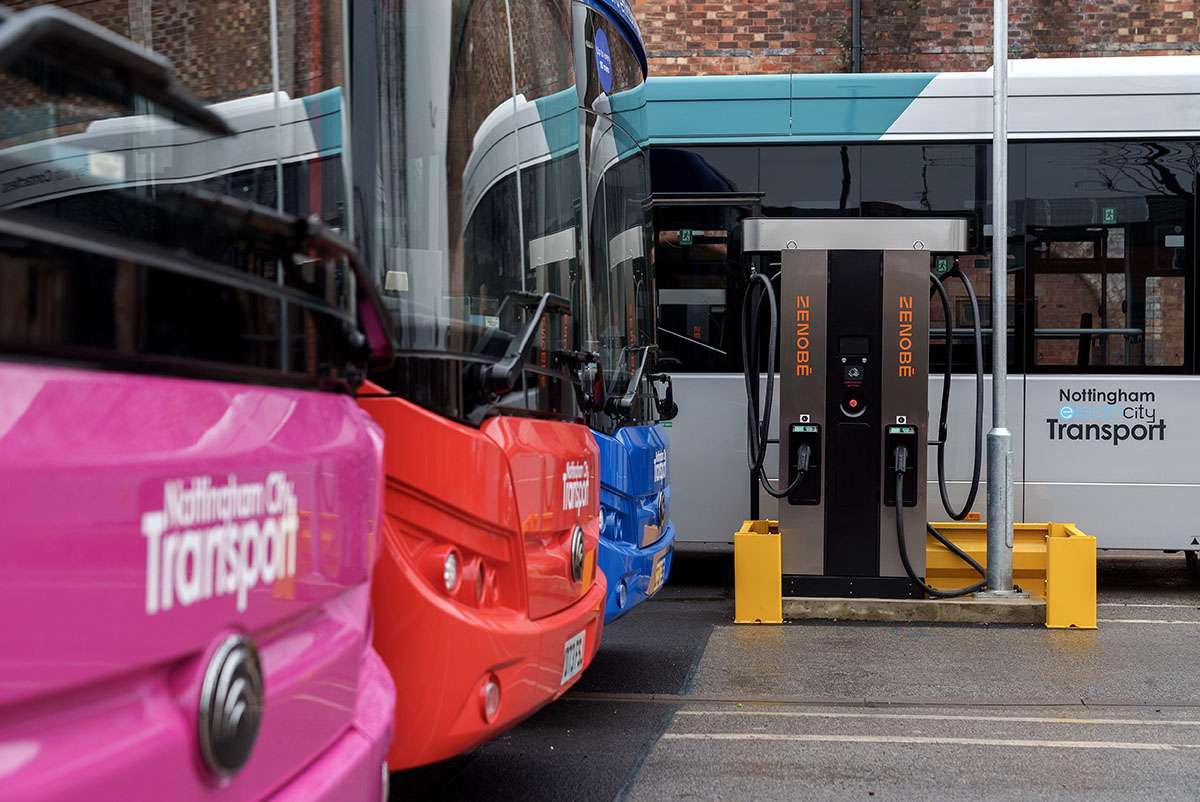Achieving better value from bus franchising: the case for electric buses
This is the first in a series looking at the specific challenges Local Transport Authorities and Mayoral Combined Authorities face when considering the options for franchising their bus services. This piece by Julia Meek, Director of Bus – UK, focuses on the total cost of ownership and the case for electrification.

Imagine you are leading the franchising strategy at a local authority. You’ve got a small team made up of people in permanent and interim roles, a growing to-do list and some very public deadlines. Why would you include zero emission buses in the strategy?
The transition costs of franchising are already high and electric buses are significantly more expensive to buy than their diesel equivalents – costing up to £300k more upfront. You will need to present them in your final recommendations and forecasts to decision-makers. It could look like you are gold-plating and, frankly, naïve.
Zero emission buses need to be included in your strategy because electric buses will in many cases be lower cost to the taxpayer than diesel, and this is a benefit that public sector organisations who can take a long-term view can, and should, realise. What’s more, you’ll not only improve the economics of bus operations, but you’ll deliver social improvements and economic opportunity for people in your local authority.
By committing to electrification, you gain both the social and environmental benefits of cleaner air and better services, while also freeing up budget that can be reinvested into other improvements to drive up ridership. In short: electric buses aren’t just the greener choice, they’re the better value choice for the public.
So, what are the core components of this longer-term view and how do they contribute to the business case for electric fleets?
1. A longer useful economic life
Total cost of ownership (TCO) is nothing new. For decades it has been used to understand the lifetime costs of owning and operating different vehicle types and the financing structures which will reduce this cost. It is now widely accepted as the best – not perfect, but the best – tool for understanding and exploring the business case for switching from diesel vehicles to electric.
More and more, operators and consultants are talking about a Useful Economic Life (UEL) for current generation electric vehicles of 20 years, against a UEL of 15 years for diesel buses. The additional 5 years of operation bring opportunities for greater fare revenue per asset and overall lifetime savings thanks to reduced frequency of replacement.
That said, there are caveats. The 20 year life isn’t without intervention – a mid-life refurbishment and a battery replacement is likely – but this UEL doesn’t seem unrealistic. And whilst an operator or franchising authority may not want to keep the vehicle for the full 20 years, you do need to look after and monitor its performance so you can intervene at the right point. Obviously, no one has a 20 year-old current generation electric bus yet but, with warranty terms increasing, it does begin to feel like a consensus is being formed on this lifespan duration.
2. Lower cost per mile for fuel
The next big driver of total cost of ownership (TCO) savings is lower per-mile energy costs for electricity compared to diesel. Using energy forecast data, we estimate these to be 0.21GBP/mile for electric compared to 0.49GBP/mile for diesel. Energy costs for running electric buses can broadly be divided into two categories: commodity and non-commodity charges. Commodity charges are the costs associated with the actual energy used, based on a depot’s consumption level. Non-commodity charges cover the costs of running the infrastructure that brings energy to customers and in your case, your depot. This includes charges to fund the upkeep of the transmission and distribution networks, as well as the costs associated with the shift to renewable generation.
There are a range of ways that depot operators can manage these costs to maximise the TCO benefits of electric over diesel. Installing on-site renewables and energy storage alongside charging optimisation software can reduce peak power requirements and reduce maintenance costs. The resulting lower peak power requirements mean that smaller grid connections can be secured – minimising upfront and ongoing costs. Meanwhile, leveraging smart-charging technologies to participate in flexibility markets like the Capacity Market creates new revenue streams that can further reduce costs on an ongoing basis.
With the right expertise, all this cost reduction can be achieved while ensuring that buses are always charged when they’re needed and services run smoothly and efficiently for the passengers that rely on them. Having supported bus operators since 2017 across more than 122 depots and 3,400 electric vehicles globally, Zenobē has the expertise and experience needed to ensure that the cost-saving benefits of EV are maximised.
3. Residual value of vehicles and their batteries
In the Bus Services (No. 2) Bill (aka the Better Buses Bill), currently making its way through Westminster, there is a clause that states that at any point from January 2030 the government can trigger an effective ban on diesel buses on some or all local bus services. As any operator knows, this means that a new diesel bus purchased now is at risk of losing most of its operational and resale value well before the end of its expected economic life.
But are electric depots always lower cost?
It should be said that, while electrification is most often the lower-cost option overall, there are cases where it can be more expensive than diesel. These are the exceptions rather than the rule – for example, when depots are located in areas where grid connection costs are prohibitive, or when routes are so long that additional buses are needed, cancelling out savings.
There are also cases where costs escalate not because of external barriers, but because the wrong strategy is taken when electrifying a depot or, in the case of a franchising authority, multiple depots:
- Splitting responsibilities across multiple partners without clear accountability for underperformance-related operational issues can leave no route for recompense.
- Failing to transfer enough risk to contractors can lead to overruns in time and budget.
- Transferring too much risk can backfire, as seen in HS2 (read this book, listen to this podcast), which then drives up costs and undermines delivery.
But, with the right strategy and the right partners, it is increasingly likely that it is better value for the taxpayer for a franchising authority to choose electric over diesel. To make the most of this opportunity, you need to think about the lifetime outcomes that you are trying to achieve and – most importantly – seek the partnerships that will help you work towards these holistically.
The next instalment, perhaps unsurprisingly, is about partnerships and collaboration between private and public sector.
Are you ready to start your electric journey?
This isn’t the future, it’s happening now. Our team of engineers and finance experts are here to help you on your journey. Fill out the form, and we’ll be in touch.
